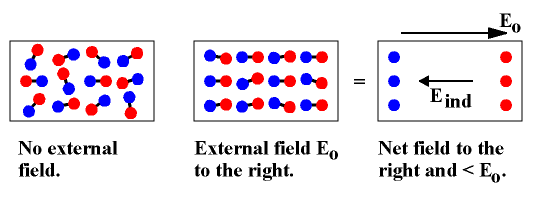
Think about what happens when a piece of insulating material is exposed to an electric field. If the molecules are non-polar, they will become polarized because the electrons will feel a force opposite to the field while the positively charged nuclei feel a force in the direction of the field. If the molecules are polar (as illustrated in the diagram below) they will go from a random alignment to being aligned with the field.

When a piece of insulator is inserted into a capacitor, we call the insulator a dielectric. The side of the insulator closest to the positive plate will be negative, while the side closest to the negative plate will be positive.
The electric field from the polarized dielectric will partially cancel the electric field from the charge on the capacitor plates. This decreases the net field inside the capacitor, and decreases the potential difference across the capacitor. To return the capacitor to its original potential difference, more charge is needed.
The net effect of the dielectric is to increase the amount of charge a capacitor can store for a given potential difference. The whole point of using a capacitor is to store charge, so coming up with a way to store more charge for the same amount of effort is a good thing.